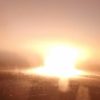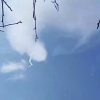Some intrepid visitors have been flocking to a remote part of southern Utah in a bid to be among the first to see the mystery metal monolith.
The structure in the Red Rock desert was first discovered last week from the air by a helicopter pilot and wildlife officers who were carrying out an annual count of bighorn sheep.
They did not share its coordinates, hoping to put people off trying to make their own pilgrimages in case they got lost in the remote area. But for some, the intrigue was overwhelming.
Theories abound over mystery metal monolith found in Utah
Read more
Around 48 hours after news of their finding was made public, pictures appeared on Instagram of people who had managed to find it.
Among them was David Surber, 33, a former US army infantry officer, who drove for six hours through the night to find it after spotting a Reddit post purporting to have found its coordinates.
Play Video
1:18
‘This is wild’: state employees find mysterious monolith in Utah desert – video
“Awesome journey out to the monolith today,” he wrote on Instagram, where he also shared its location. “Regardless of who built it or where it came from. It was a positive escape from today’s world. Some for many people to rally behind and enjoy together.”
He said he was alone with the structure, which he described as formed of aluminium and formed of “three pieces riveted together”, for about 10 minutes before others arrived.
“Overall not too crowded you all want to make the journey,” he wrote.
Tim Slane, who shared the coordinates on Reddit, said he worked them out by tracking the flight path of the helicopter.
It is not known what the origins of the object, estimated by Bret Hutchings, the helicopter pilot who discovered it, to be between 10ft and 12ft high (about three metres), are.
But it has been compared to the work of several minimalist sculptors, including the late John McCracken.
A spokesperson for his gallerist, David Zwirner, told the Guardian earlier this week it was not one of McCracken’s works, saying they believed it could be “a work by a fellow artist paying homage to McCracken”. But Zwirner later told the New York Times it could in fact be by the artist.























































Свежие комментарии